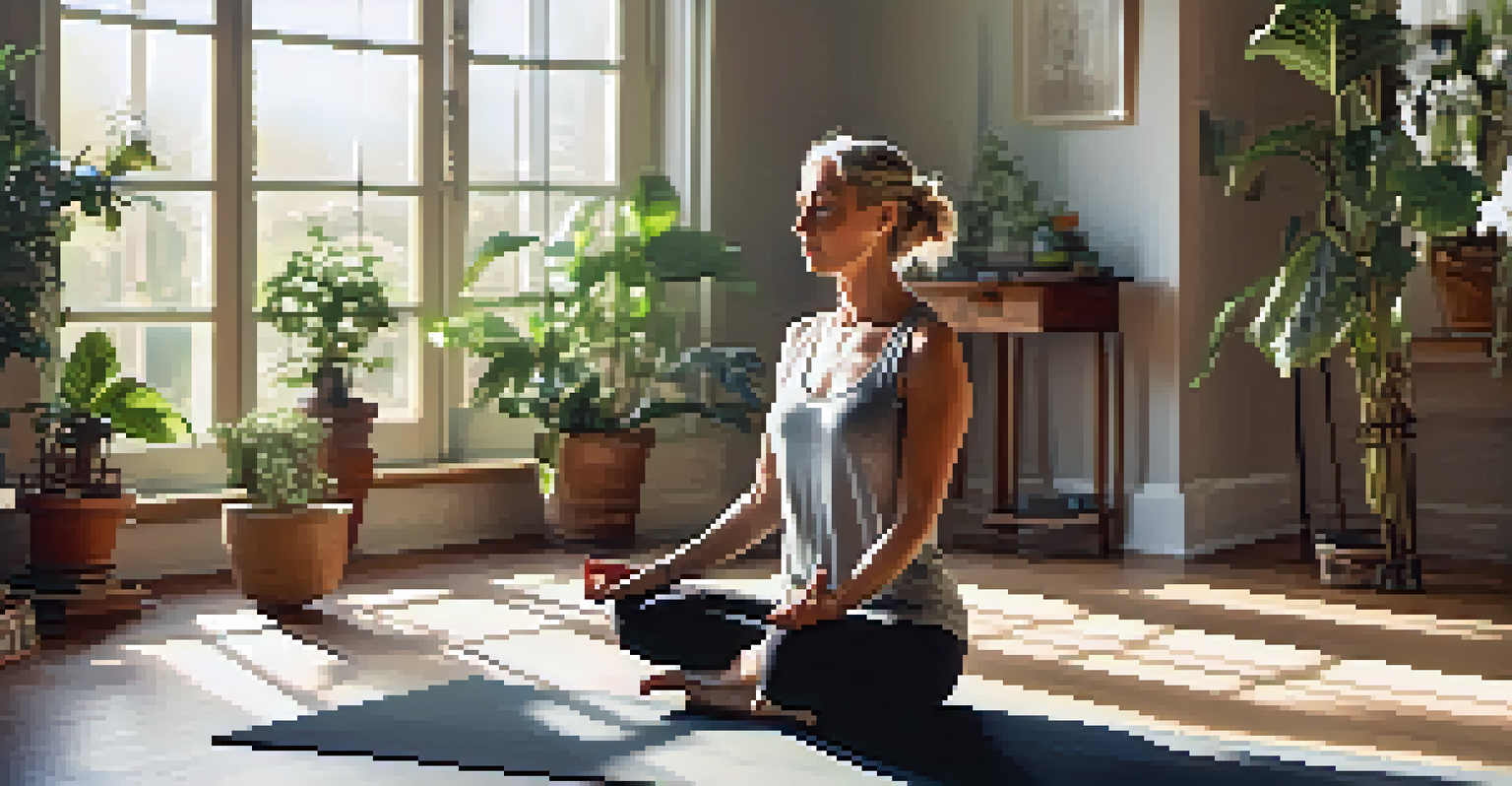Healthy Aging: Using Visualization Techniques for Wellness

Understanding Healthy Aging and Its Importance
Healthy aging is more than just adding years to your life; it’s about adding life to your years. As we age, maintaining our physical, mental, and emotional well-being becomes paramount. Embracing healthy habits can lead to a more fulfilling and energetic lifestyle, allowing us to engage fully with the world around us.
The mind is everything. What you think you become.
Incorporating practices like balanced nutrition, regular exercise, and stress management can significantly impact how we age. It’s not just about avoiding illness; it’s about thriving and enjoying life’s experiences to the fullest. By focusing on wellness, we can nurture a positive mindset that supports our overall health.
Visualization techniques can play a key role in this journey. They offer a powerful tool to enhance our mindset, promote resilience, and inspire action towards healthier choices. With a little guidance, anyone can learn to harness the potential of their imagination for their well-being.
What Are Visualization Techniques?
Visualization techniques involve creating mental images to achieve specific goals or enhance well-being. Imagine picturing yourself engaged in activities that promote health, like jogging in a sunlit park or enjoying a delicious salad. This practice can motivate you to take action in real life, bridging the gap between thought and reality.

Often associated with athletes and performers, visualization transcends those boundaries. It can be a valuable tool for anyone looking to improve their mental clarity, reduce stress, or even manage chronic pain. By vividly imagining positive outcomes, we can help our brains and bodies align with those desired states.
Healthy Aging Enhances Life Quality
Adopting healthy habits leads to a more fulfilling and energetic lifestyle as we age.
The beauty of visualization lies in its accessibility. You don’t need fancy equipment or extensive training; just your mind and a quiet space to explore your thoughts. With a little practice, visualization can become a natural component of your wellness routine.
The Science Behind Visualization and Wellness
Research supports the effectiveness of visualization techniques in enhancing physical and mental health. Studies have shown that mental imagery can stimulate brain activity similarly to actual physical experiences. This means that when you visualize yourself exercising or feeling healthy, your body may respond as if you’re truly engaged in those activities.
Visualization is daydreaming with a purpose.
Neuroscience reveals that the brain often cannot differentiate between real experiences and vividly imagined ones. This phenomenon allows visualization to influence our emotional and physical states positively. For instance, visualizing yourself successfully completing a workout can boost your motivation and commitment to follow through.
Furthermore, visualization can aid in stress reduction and relaxation. By focusing on calming images or scenarios, individuals can lower their heart rates and reduce anxiety, creating a more conducive environment for healthy aging. This mental practice not only enhances physical health but also promotes emotional resilience.
Practical Steps to Start Visualizing for Health
Getting started with visualization is easy and requires just a few simple steps. Begin by finding a quiet, comfortable space where you can relax without distractions. Close your eyes and take a few deep breaths to center yourself, letting go of any tension in your body and mind.
Next, think about a health goal or a positive outcome you wish to achieve. It might be a specific activity, like hiking a favorite trail or simply feeling more energetic. Create a detailed mental image of yourself engaged in that scenario, focusing on the sights, sounds, and feelings associated with it.
Visualization Boosts Wellness
Using visualization techniques can motivate healthier choices and improve mental clarity.
Practice this visualization regularly, ideally daily, to reinforce the positive imagery in your mind. Over time, you may notice a shift in your motivation and energy levels, leading to healthier choices that support your overall well-being.
Integrating Visualization with Other Wellness Practices
Visualization works best when combined with other wellness practices. For instance, incorporating mindfulness or meditation can enhance your ability to visualize effectively. By calming the mind, you create a fertile ground for positive imagery to take root and flourish.
Consider pairing visualization with physical activities like yoga or walking. As you engage in these practices, visualize the health benefits you’re gaining, such as increased flexibility, strength, or emotional balance. This combination can amplify the effects of both the physical and mental exercises.
Moreover, journaling your visualization experiences can deepen your understanding of their impact. Write down your thoughts, feelings, and any changes you notice in your motivation or well-being. This reflection can help you stay connected to your goals and celebrate your progress along the way.
Overcoming Challenges in Visualization Practice
Like any skill, visualization can come with its challenges, particularly for beginners. One common hurdle is a wandering mind. If your thoughts drift during visualization, gently bring your focus back to the imagery without self-judgment. It’s perfectly normal for this to happen, especially at first.
Another challenge might be skepticism about the effectiveness of visualization. It can help to approach this practice with an open mind, allowing yourself to explore its possibilities. You might even start with short sessions, gradually increasing the duration as you become more comfortable and see results.
Combine Practices for Best Results
Integrating visualization with mindfulness and physical activities can amplify wellness benefits.
Lastly, consistency is key. It’s easy to set aside visualization when life gets busy, but making it a non-negotiable part of your routine can yield significant benefits. Consider scheduling a specific time for visualization, treating it as an essential appointment for your health and wellness.
Real-Life Success Stories of Visualization in Aging
Many individuals have experienced transformative results through visualization techniques. For instance, a retired athlete might visualize themselves staying active and healthy in their golden years, leading them to take up new physical activities they never thought possible. This proactive mindset not only boosts their confidence but also enhances their quality of life.
Another inspiring example is that of a woman who faced chronic pain. Through consistent visualization, she began to imagine herself free of discomfort, focusing on mobility and joy. Over time, she reported reduced pain levels and a newfound appreciation for daily activities.

These stories highlight the potential of visualization as a tool for empowerment in aging. By harnessing the power of the mind, one can cultivate a positive mindset that promotes resilience, vitality, and overall well-being.